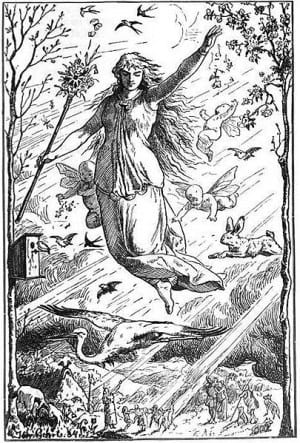
Ostara welcomes the season of rebirth
Ostara, or the vernal equinox, is upon us and night and day are in perfect balance.
Ostara is just one of the names given to the celebration of the spring equinox. The word Ostra derives from Eostre, the Anglo-Saxon goddess of spring and fertility, whose festival at the spring equinox celebrates rebirth.
Ostara is associated with the coming of spring and the dawn, and Eostre’s festival is celebrated at the spring equinox because she brings renewal and rebirth from the death of winter.
Many symbols are associated with Ostara, including colored eggs and, what else? Rabbits.
If you haven’t already recognized the similarities, Ostara and Easter occur around the same time and a lot of the customs we celebrate today as part of Easter “tradition” actually have roots in Pagan customs.
Wiccans, Heathens, and modern Pagans celebrate the vernal equinox as Ostara, Lady Day, Shubun-sai, or the spring equinox as a time of renewal and rebirth.
The spring equinox welcomes celebrations from all walks of life, religious beliefs, and even just some crazy balancing acts that should be just as possible every other day of the year.
People try to balance eggs and brooms on their ends at this time of the year. Is it really easier to balance things on end during the equinox? No. But today you’re more likely to see your roommate sitting in the living room with a carton of eggs and a furrowed brow. It’s just as likely that an egg will balance today as it will two months from now.
Whether you are celebrating Ostara, Easter, Nowroz, or Let’s Balance an Egg Day, the season has arrived. Spring is in full swing, flowers are budding, those crazy march hares are out of hibernation and at their favorite task, and if you follow Ostara, it’s all because of Eostre.















